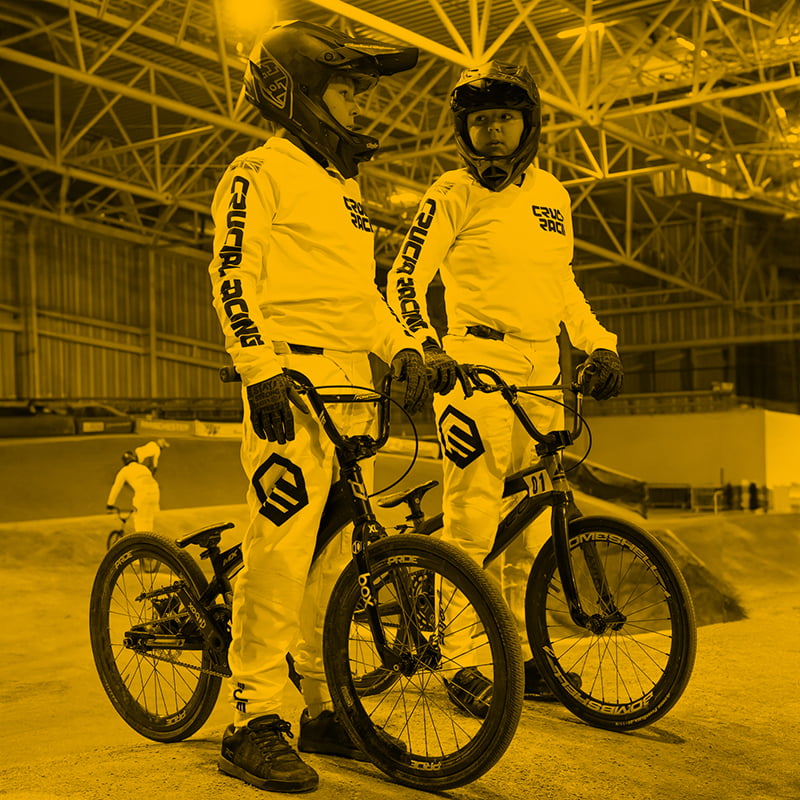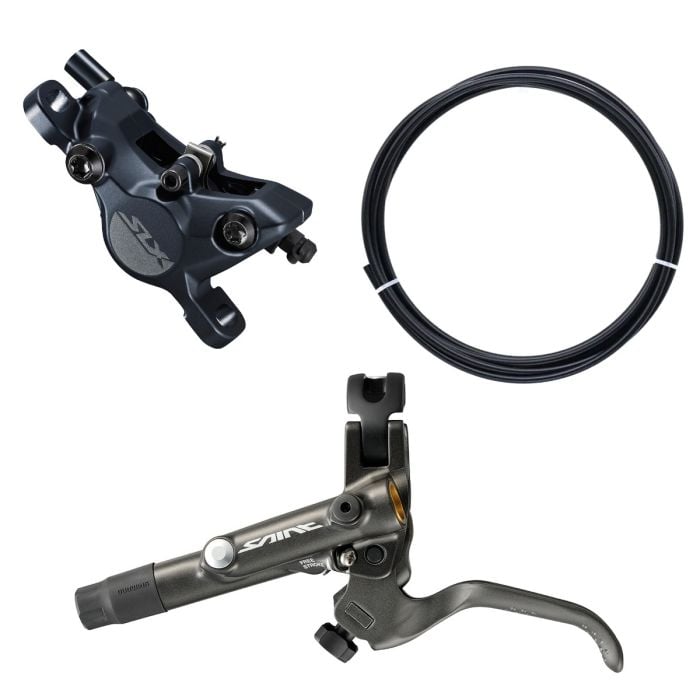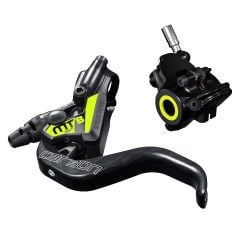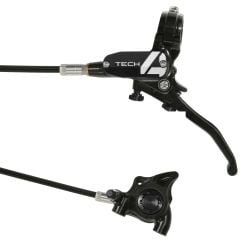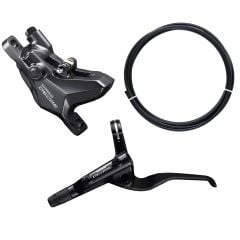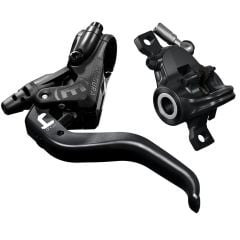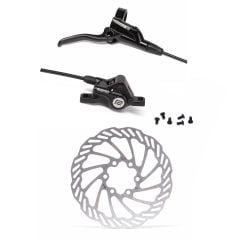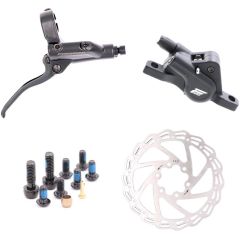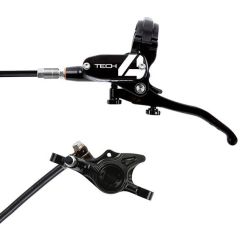Shimano Saint X SLX Postmount Hydraulic Disc Brake Kit
Upgrade your braking performance with the Shimano Saint/SLX Postmount Hydraulic Disc Brake Kit, meticulously curated for regular riders who demand dependable stopping power and exceptional control... Read More
Upgrade your braking performance with the Shimano Saint/SLX Postmount Hydraulic Disc Brake Kit, meticulously curated for regular riders who demand dependable stopping power and exceptional control.
Handpicked for BMX by our experts, this comprehensive custom kit offers you an outstanding disc brake experience.
Features:
- Tool-Free Reach Adjustment
- Wide Range Of Adjustment
- Super Lightweight Calliper
- Oversized 22mm Ceramic Pistons
*Please Note: This Disc Brake Kit requires bleeding. The components are disassembled and should be installed by a qualified mechanic. (Mineral Oil Included)
Disc Brake Kit Parts:
Brake Lever: Shimano Saint Brake Lever
The world's best gravity riders rely on Shimano Saint brakes to deliver ultimate stopping power and nuanced modulation no matter the conditions.
For sure braking in the roughest terrain, this lever has a textured and feature tool-free reach adjust, Free Stroke adjustment, and I-spec B compatibility.
- Ergonomic, powerful and compact Servo-Wave hydraulic disc brake lever is performance optimized with full adjustability on the fly
- short stroke Servo-Wave mechanism for quick pad engagement and more power for aggressive riding
- Adjustable free stroke enables you to fine tune the amount of lever pull before pad and rotor engagement
- Easy access no tools lever reach adjustment dial for custom lever feel and position
- Lightweight, strong and durable forged alloy one piece body is also rigid under hard braking loads
- Forged alloy short brake lever with antislip finish for optimum strength, grip and reliability
- Ergonomic pivot position for efficient and powerful braking follows a natural pulling arc
- Integrated inline barrel master reservoir with easy bleed port
- Mineral oil brake fluid
- Hinged clamp for quick installation
- 2nd generation I-spec-B-B compatible
- Weight: 104g
Calliper: Shimano SLX 2 Piston Calliper
This calliper features lightweight braking performance and reliable stopping power in all conditions!
- High performance hydraulic disc brake for efficient braking in all conditions
- Front or rear wheel use for International Standard or Post mount with adapters (not included)
- Oversized 22mm ceramic pistons optimized for heat insulation, lightweight and stiffness
- Opposed 2-piston design reduces leading effect and optimal pad wear increases braking control
- Increased pad to rotor clearance reduces the chance of rotor drag in muddy conditions
- Forged calliper monobody design is lightweight and rigid
- One way internal fluid circuit makes bleeding easy
- Mineral oil brake fluid is non-corrosive and less hazardous than conventional hydraulic brake fluid
- Shim-less mounting bracket allows for quick installation and setting up
- Recommended for use with Ice Tech Center Lock rotors for optimum braking performance
- Can be used with Ice Tech pads available in resin or sintered compound, the optional aluminum radiation fin pad further improves heat dissipation reducing brake surface temperature by 50 deg C
- Supplied with standard G03S resin compound brake pads
- Weight: 120g
Cable: Shimano Banjo Hose – 1700mm - SM-BH90
- Premium replacement resin coated hydraulic brake hose
- Stiff reinforced hose that performs under pressure, keeping your brakes sharp
- 2.1mm bore diameter for excellent brake performance and response
- Engineered for use with Shimano Deore XT hydraulic disc brake system
- Straight hose connection at lever, to a banjo connector at calliper
- 1700mm Length for rear brake
- Easily cuttable to fit - comes complete with olive, hose insert, lever connector, lever connector cover, banjo bolt and seals
There are currently no reviews for this product.
New Rider?
